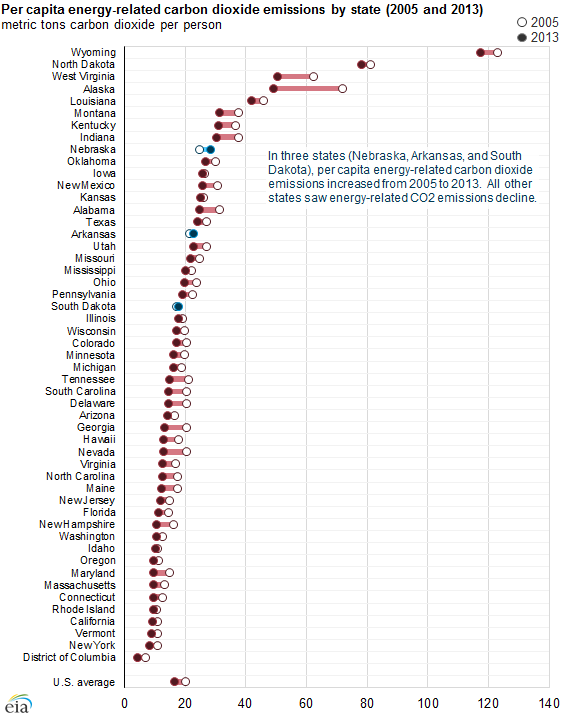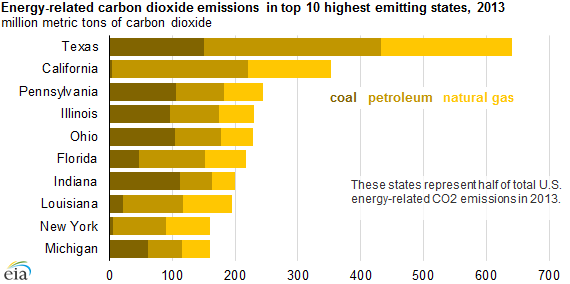This article was published in Scientific American’s former blog network and reflects the views of the author, not necessarily those of Scientific American
According to the Energy Information Administration (EIA), per capita CO2 emissions from energy-related activities dropped in 47 states and the District of Columbia between 2005 and 2013. The other three - Arkansas, Nebraska, and South Dakota – saw small increases in per capita emissions. Unsurprisingly, average U.S. per capita emissions also declined over these 8 years.

Credit: EIA
In terms of total emissions, 42 states saw reductions over the same time period, says the EIA. The top emitting states in 2013 include Texas and California. Both sit somewhat lower on the list in terms of per capita emissions – with California currently taking the 4th lowest per capita emissions slot.
On supporting science journalism
If you're enjoying this article, consider supporting our award-winning journalism by subscribing. By purchasing a subscription you are helping to ensure the future of impactful stories about the discoveries and ideas shaping our world today.
All told, the top ten emitting states represent half of the total U.S. energy-related carbon dioxide emissions.

Credit: EIA
According to the EIA, these data represent CO2 emissions released at the location where fossil fuels are consumed. In the electricity sector, this means that emissions are attributed to electricity production (and not consumption).